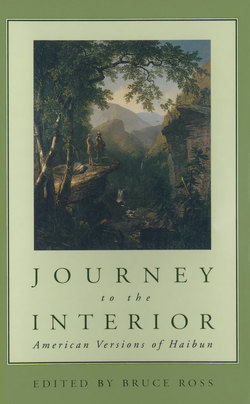Читать книгу Journey to the Interior - Bruce Ross - Страница 6
ОглавлениеA Note on the Haibun
The title of this collection alludes to the well-known seventeenth-century travel journal by Matsuo Bashō, Oku-no-hosomichi, which might be freely translated as Narrow Path to the Interior. In his old age Basho, who may be credited with establishing the haiku form, undertook a long journey to the remote regions of northern Japan, fully expecting to die before completing it. He did complete the journey, and his record of it has become a classic of world literature and an example, in its broadest sense, of haibun, autobiographical poetic prose accompanied by haiku.
American versions of the form began to appear in the late fifties with travel diaries by Gary Snyder and fiction by Jack Kerouac. In the late sixties work identified as haibun was published in American haiku journals. From the seventies through the nineties the typical form was a one-paragraph nature sketch that ended in a haiku. However, there has been also a wealth of experimentation in form, with book-length travel journals, many-sectioned autobiographical accounts, and experimental fiction, and in subject matter, with erotic self-revelations, social commentaries, historical re-creations, and the like. These directions have produced such deft contemporary practitioners of the form as Jim Kacian, Tom Lynch, and William M. Ramsey. But in many ways the title of this collection is justified in its depiction of the decidedly American way that this conservative Japanese form has been transformed to serve a poetic exploration of the unfathomable interior of the self, the emotional nature of love for another, the deep structure of aesthetic value in nonhuman nature, the implicative sense of dwelling in a particular place, the profound revelation of the unknown place, the hidden well-springs of our spiritual sense—all in the context of the so-called late twentieth-century postmodern condition. Although space and aesthetic constraints prevent the inclusion of many haibun discussed in the Introduction, all such creative overtures are invaluable at this stage of the development of this new American form. Similarly, many of the strong haibun reprinted in the anthology, though not discussed in the Introduction, speak for themselves. Readers interested in exploring haibun further should consult the bibliography. The authors of the haibun collected for this volume are to be congratulated for such eventful explorations and for forging an important addition to American literature.
